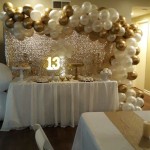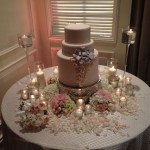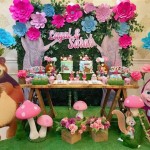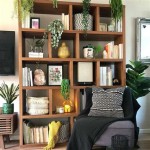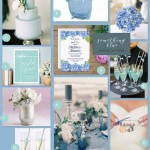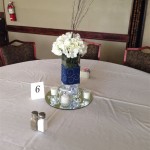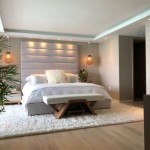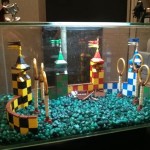Decorative Objects for Living Room Enhancement
A living room serves as a central hub within a residence, often acting as a space for relaxation, entertainment, and social interaction. The aesthetic appeal of a living room significantly contributes to the overall ambiance of the home and the well-being of its inhabitants. Decorative objects play a crucial role in shaping this aesthetic, adding personality, visual interest, and a sense of completion to the space. The selection and arrangement of these objects, however, require careful consideration to achieve a harmonious and visually appealing result.
The term "decorative objects" encompasses a broad range of items, from functional pieces that also serve an aesthetic purpose to purely ornamental elements. These can include, but are not limited to, vases, sculptures, artwork, textiles, lighting fixtures, plants, and even carefully curated collections of personal items. The strategic deployment of these objects can transform a living room from a mere functional space into a reflection of the homeowner's personal style and taste.
Balancing Aesthetics and Functionality
One of the key considerations when selecting decorative objects is striking a balance between aesthetics and functionality. While purely ornamental objects can add visual appeal, incorporating functional elements that also contribute to the overall design can enhance the practicality of the living room. For example, a decorative throw blanket not only adds texture and color but also provides warmth and comfort. Similarly, a stylish coffee table book can serve as a conversation starter and a visual accent while also providing reading material for guests. The integration of functional items ensures that the decorative objects contribute to both the visual appeal and the usability of the space.
Consider the purpose of the living room when selecting decorative objects. If the room is primarily used for relaxation and entertainment, comfortable and inviting elements should be prioritized. This may include мягкие cushions, plush rugs, and ambient lighting. If the room is used for socializing, items that encourage conversation and interaction, such as interesting artwork or decorative games, may be more appropriate. The functionality of the objects should align with the intended use of the space.
The size of the living room also influences the selection of decorative objects. In smaller spaces, it is crucial to avoid clutter and opt for fewer, larger pieces that make a statement. Overloading a small room with too many small objects can make it feel cramped and overwhelming. In larger spaces, a wider variety of objects can be used, but it is still important to maintain a sense of balance and cohesion. Grouping smaller objects together can create visual interest without making the space feel cluttered.
The color palette of the living room should also be taken into account when selecting decorative objects. The objects should complement the existing color scheme and enhance the overall aesthetic. Introducing pops of color through decorative objects can add visual interest and prevent the room from feeling monotonous. However, it is important to avoid using too many conflicting colors, as this can create a chaotic and unappealing effect. A cohesive color palette will contribute to a sense of harmony and balance within the space.
Materiality and texture are also important considerations. The use of different materials, such as wood, metal, glass, and fabric, can add depth and visual interest to the living room. Mixing textures, such as smooth and rough surfaces, can also create a more dynamic and engaging space. However, it is important to ensure that the materials and textures complement each other and contribute to the overall aesthetic. The tactile qualities of the objects can also enhance the sensory experience of the living room.
Lighting plays a crucial role in highlighting decorative objects and enhancing the overall ambiance of the living room. Strategic placement of lighting fixtures can accentuate specific objects and create focal points within the space. For example, a spotlight can be used to highlight a piece of artwork, while a table lamp can illuminate a decorative vase. The type of lighting, such as ambient, task, or accent lighting, should be carefully considered to achieve the desired effect. Proper lighting can transform the appearance of decorative objects and enhance their visual impact.
Types of Decorative Objects and Their Placement
The specific types of decorative objects selected for a living room will largely depend on the homeowner's personal style and preferences. However, certain categories of objects are commonly used to enhance the aesthetic appeal of the space.
Vases and Floral Arrangements: Vases can add elegance and sophistication to a living room, whether they are used to display fresh flowers, dried arrangements, or are simply displayed as sculptural objects. The shape, size, and material of the vase should complement the surrounding décor. Placing vases on coffee tables, side tables, or mantels can create focal points and add visual interest. The inclusion of floral arrangements introduces natural elements and color into the space.
Sculptures and Art Objects: Sculptures and art objects can add a sense of artistic expression and personality to a living room. These can range from small figurines to larger, more imposing pieces. The style and subject matter of the sculpture or art object should reflect the homeowner's taste and complement the overall aesthetic of the room. Placing sculptures on pedestals, shelves, or coffee tables can elevate their presence and draw attention to them.
Textiles: Textiles, such as throw blankets, cushions, and rugs, can add warmth, texture, and color to a living room. Throw blankets can be draped over sofas or chairs to add visual interest and provide comfort. Cushions can be used to add pops of color and pattern to seating areas. Rugs can define the space and add a sense of warmth and comfort underfoot. The selection of textiles should complement the overall color scheme and style of the room.
Mirrors: Mirrors can enhance the sense of space and light in a living room. Strategically placed mirrors can reflect light and make the room feel larger and brighter. Mirrors can also be used to create focal points and add visual interest. A large mirror placed on a wall can serve as a statement piece and reflect the surrounding décor. Smaller mirrors can be grouped together to create a gallery wall effect.
Candles and Candle Holders: Candles and candle holders can add ambiance and warmth to a living room. Candles can be used to create a relaxing and inviting atmosphere. Candle holders can range from simple glass containers to ornate metal or ceramic designs. Placing candles on coffee tables, mantels, or shelves can add a soft, warm glow to the space. Scented candles can also add a pleasant aroma to the room.
Books and Magazines: Books and magazines can add a sense of intellectual curiosity and personality to a living room. Displaying books on shelves, coffee tables, or side tables can create a visually appealing and inviting atmosphere. Arranging books by color or size can add a sense of order and visual appeal. Magazines can be displayed in decorative holders or baskets.
Pottery and Ceramics: Pottery and ceramics can add texture, color, and artistic flair to a living room. Vases, bowls, and decorative plates can be displayed on shelves, coffee tables, or mantels. The style and design of the pottery and ceramics should complement the overall aesthetic of the room. Handcrafted or unique pieces can add a personal touch to the space.
Creating a Cohesive and Personalized Space
The ultimate goal when selecting decorative objects for a living room is to create a cohesive and personalized space that reflects the homeowner's individual style and preferences. This requires careful consideration of the overall design aesthetic, the functionality of the objects, and the arrangement of the elements within the space.
Begin by establishing a clear design concept for the living room. This may involve identifying a specific style, such as modern, traditional, bohemian, or minimalist. The selection of decorative objects should align with the chosen style and contribute to the overall aesthetic. Consider the existing furniture and architectural features of the room when developing the design concept.
Curate a collection of objects that resonate with personal interests and experiences. This may include travel souvenirs, family heirlooms, or items collected over time. Incorporating these personal items can add a sense of meaning and authenticity to the living room. However, it is important to avoid clutter and ensure that the objects are displayed in a thoughtful and organized manner.
Experiment with different arrangements and layouts to find the most visually appealing and functional arrangement. Grouping objects together can create visual interest and draw attention to specific areas of the room. Consider the scale and proportion of the objects when arranging them. Avoid overcrowding the space and allow each object to have its own visual presence.
Regularly reassess and update the decorative objects to keep the living room feeling fresh and inviting. Seasonal changes can inspire new arrangements and color schemes. Incorporating new objects or rearranging existing ones can revitalize the space and reflect evolving tastes and preferences. The living room should be a dynamic and evolving space that reflects the homeowner's personality and lifestyle.
Ultimately, the selection and arrangement of decorative objects for a living room is a highly personal process. There is no right or wrong way to decorate a living room, as long as the space reflects the homeowner's individual style and preferences. The key is to create a space that is both visually appealing and functional, and that provides a sense of comfort and well-being.

Decorating Items To Choose For Your Living Room Beautiful Homes
:strip_icc()/101653361-2473aa340dc345ab824b1a314a1ef105.jpg?strip=all)
15 Tips For Arranging All Kinds Of Accessories

13 Decorative Objects For A Midcentury Living Room Hunker Mid Century Modern Accessories Wall Decor

58 Best Wall Art Ideas For Every Room Cool Decor And Prints

Modern Decorative Objects With Intriguing Personalities

Decorative Objects The Must Have Accessories For Styling Your Home

77 Best Living Room Decor Ideas 2024 Unique

Favorites Under 50 Decorative Objects Centsational Style Home Decor Interior Design

How To Make Your Living Room More Welcoming

Get The Look Harvest Decor Objects West Elm

